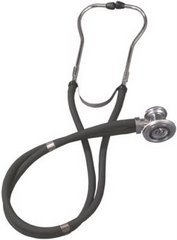
I read about this disturbing story a few days ago in the news:
____________________________________________________________________
TV star chimp shot dead by police after woman was badly mauled
Published Date: 18 February 2009
A 14-STONE chimpanzee who once starred in US television commercials was shot dead by police after a violent rampage that left a friend of his owner badly mauled.
Travis, who was 15 years old and domesticated, inexplicably attacked Charla Nash, 55, when she turned up at the home of the animal's owner, Sandra Herold.
Ms Nash had gone to the house in Stamford, Connecticut, on Monday to coax the chimp back into the house after she escaped.After the animal lunged at Ms Nash when she got out of her car, Ms Herold ran inside to call the police. "She retrieved a large butcher knife and stabbed her pet numerous times in an effort to save her friend, who was really being brutally attacked," Richard Conklin, of Stamford police, said.
After the initial attack, Travis ran away and started roaming Ms Herold's property. Police then arrived and set up a security cordon so medics could reach the critically injured woman.
But the chimp returned and went after several of the officers, who retreated into their cars. Travis knocked the mirror off a cruiser, before opening its door and starting to get in, trapping the officer.
That officer shot the chimp several times, Mr Conklin said.
The wounded chimp fled the scene, but police were able to follow the trail of his blood: down the drive, into the open door of the home, through the house and to his living quarters, where he had retreated and died of his wounds.
Ms Herold and two officers suffered minor injuries.
Ms Nash is in a critical condition after suffering what the town's mayor, Dannel Malloy, called "life-changing, if not life-threatening" injuries to her face and hands.
Her sister-in-law, Kate Nash, said yesterday that she underwent surgery on Monday night and came out of it "OK".
Mr Conklin said police didn't know what had triggered the attack. "There was no provocation that we know of. One thing that we're looking into is that we understand the chimpanzee has Lyme's disease and has been ill from that, so maybe from the medications he was out of sorts. We really don't know," he said.
He said Travis had been acting so agitated earlier that afternoon that Ms Herold had given him the anti-anxiety drug Xanax in some tea, which doctors say can stimulate aggression in unstable people.
Mr Conklin also suggested the animal might have attacked Ms Nash because she was wearing her hair differently and perhaps wasn't recognised.
When he was younger, Travis appeared in TV adverts, including one for Coca-Cola, and made an appearance on the Maury Povich Show. The chimp was well known around Stamford because he rode around in trucks belonging to the towing company operated by his owners.
After Travis escaped from their car for two hours in 2003, the Herolds told how he was toilet-trained, dressed himself, took his own bath, ate at the table and drank wine from a stemmed glass. He also brushed his teeth, logged on to a computer to look at pictures and watched television using the remote control.
Colleen McCann, a primatologist at New York's Bronx Zoo, said chimps were unpredictable and dangerous, even after living among humans for years.
She said: "It's deceiving to think that if any animal is 'well-behaved' around humans that means there is no risk involved to humans for potential outbursts of behaviour.
"They are unpredictable, and in instances like this, you cannot control that behaviour or prevent it from happening if it is in a private home."
____________________________________________________________________
I feel very sad whenever I come across cases such as this.
Travis was treated as a member of the family. Some domestic pets that I know of, such as cats and dogs, are not even treated like Travis.
Yet he is a wild animal.
It is tragic for the woman who was attacked.
It is tragic for Travis' "owner"...and ultimately...
It is tragic for Travis as he was killed.
In reading the last part of the story, I was most struck by how Travis died in his room. He was simply torn between being a wild animal and being one of the family.
It is my personal opinion that exotic animals should not be kept as pets, no matter how they have been tamed...or at least how one believes they have been tamed.
It is my personal belief that exotic animals belong in the wild, with minimal human interference.
I would love to hear what you have to say.
Do feel free to comment on my blog.




